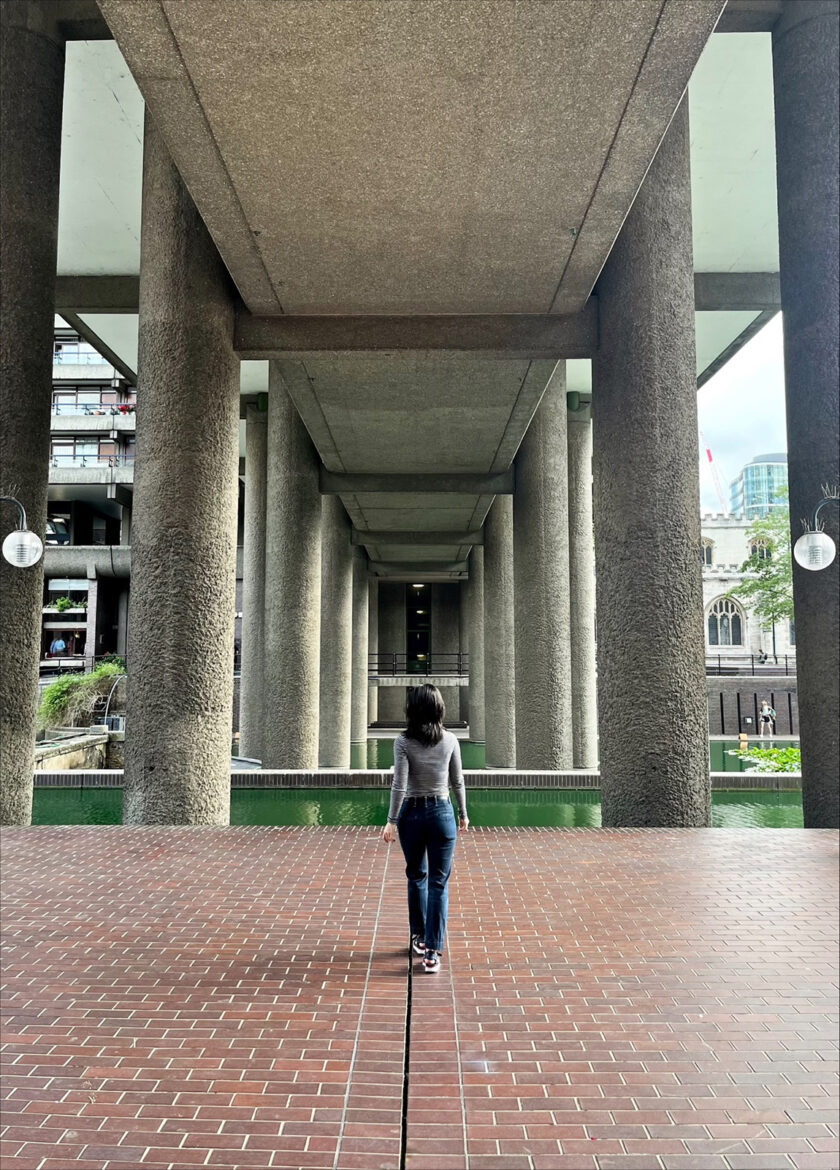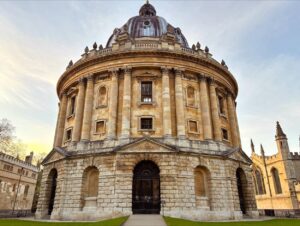Brutalist architecture is a bit like marmite: people either love it or loathe it. I belong firmly to the pro-brutalist camp, there’s something about its gigantic asymmetrical, concrete slabs, mounted together that I find exciting.
For a long time the style fell out of favour but it’s definitely experiencing a renaissance. Their cool and plain exteriors are becoming the basis for modern-day design and architecture, with some original Brutalist flats in England being privatised and selling for hundreds of thousands (annoyingly). What’s more are the numerous Instagram accounts paying tribute to its photogenic stark lines, raw aesthetic and overwhelming ratio of concrete.
Previously I’ve written about Brutalist architecture in London and now I want to extend the tribute across the whole of England. Despite living in London I’m conscious of this blog becoming too London-centric when there’s so much to see outside of the capital that deserves attention – and at times, defending.
Leeds University Campus
Architects: Chamberlin, Powell and Bon
The Roger Stevens lecture hall is close to my heart. I moved out of home to Leeds when I was eighteen to go to Leeds University (I later dropped out but that’s another story) and I had the joy of attending lectures in this iconic building. At the time I wasn’t even aware of brutalism as an architectural form, but its appearance made an impression on me and it was the first time I consciously became drawn to its aesthetic.
Central Hall, University of York
Architects: Robert Matthew, Johnson-Marshall & Partners (RMJM)
York is considered one of the most beautiful cities in England, so it’s little surprise this spaceship-looking building is often met with disdain. Somewhat amusingly, it’s said to be a bone of contention that whilst students from York St. Johns University graduate at York Minister with its universally admired Gothic architecture, students from this Russell Group university graduate in this less conventionally attractive building.
Our Lady Help of Christians, Birmingham
Architect: Richard Gilbert Scott
The Grade II* listed building is a Roman Catholic church built in 1967. It is part of a group of Roman Catholic churches that were built in Birmingham at this time, reflecting the historical community of Irish immigrants which grew in the area in the post-war period.
It’s a reinforced concrete frame in-filled with brickwork, with an innovative sculptural design that sees the ribbed roof curving up into a central tower. You can’t really detect how colourful the stained glass by John Chrestien is until you go inside. It fills in the spaces left between the concrete frame letting in a soft quality of light.
Clifton Cathedral, Bristol
Architect: Ronald J. Weeks
Consecrated in 1973, unlike a lot of brutalist architecture in England, this church is well loved within the community and architect lovers alike. This may have something to do with building’s acoustics which are said to be first-rate, making the venue popular for some of Europe’s top classical ensembles. Perhaps even more impressive is the interior which benefits from a lot of natural light, and with a capacity that can hold around a 1000 people, it conveys a great sense of being large yet intimate at the same time. Furthermore, the seats are positioned so that no one is ever far from the altar so that it would foster a more intimate connection with the high altar during mass.
Metropolitan Cathedral, Liverpool
Architect: Frederick Gibberd
Have I just brought together in one Brutalist bundle the holy trinity of places of worship? The Metropolitan Cathedral in Liverpool certainly has the wow factor. There’s something extremely surprising about seeing a Brutalist church or cathedral. Visually, it goes against the grain and personally I don’t really associate churches with the modern world, yet here we are.
Lecture Theatre Block, Brunel University
Architect: Richard Sheppard, Robson and Partners
There’s no other university campus in England that has its roots so firmly grounded in brutalism than Brunel University. This campus not only holds a place in the Brutalist Hall of Fame (there’s no such thing… but there should be, right?), it’s also part of cinematic history. Some of you will recognise it as the backdrop to Stanley Kubrick’s masterpiece, A Clockwork Orange.
National Theatre, London
Architect: Denys Lasdun
The National Theatre has divided public opinion since it opened in 1976 along the South Bank. Prince Charles once amusingly called it a ‘nuclear power station’ and in 2001, a Radio Times poll featured Lasdun’s building in the top five of both the most hated and the most loved British buildings. To make up your own mind, and get a real understanding of Brutalism, join one of the architecture tours available from the Southbank Centre.
Hayward Gallery, London
Architect: Ron Herron
Also located along the South Bank, Hayward Gallery is one of the world’s leading contemporary art galleries. Since it opened in the summer of 1968 with an exhibition by Henri Matisse, it has played a crucial role in presenting work by some of the world’s most significant artists.
After being closed for renovations, it re-opened in January 2018 with a retrospective of the work of acclaimed German photographer Andreas Gursky. Some people will be happy to know the new renovations consists of a new roof with much-improved pyramidal lights, giving the top-floor gallery proper natural light for the first time.<
The Barbican, London

Architects: Chamberlin, Powell and Bon
My favourite venue in the whole of London! The Grade II-listed Barbican Centre is Europe’s largest multi-arts venue and one of London’s best examples of Brutalist architecture and most loved. It was developed as part of a utopian vision to transform an area of London left devastated by bombing during the Second World War. It took over a decade to build and was opened by the Queen in 1982, who declared it ‘one of the modern wonders of the world’.
Architecture tours of the building are organised for those who wish to know everything there is to know about the Barbican’s design. You can read about my review of the tour here.
Balfron Tower, London
Architect: Ernö Goldfinger
Goldfinger is considered by many the father of Brutalism, and this 27-floor tower in east London is one of his creations. Goldfinger had a reputation for being a formidable man, so much so that Ian Flemming named his most notorious Bond villain after him. Unsurprisingly, the architect was not thrilled by this and tried to sue Flemming unsuccessfully. Balfron Tower is often said to be the precursor and testbed to the larger and more famous Trellick Tower highlighted below.
Trellick Tower, London
Architect: Ernö Goldfinger
20 Bedford Way, London
Architect: Denys Lasdun
This controversial Grade II* listed building, opened in 1977, was designed by Denys Lasdun who also built the National Theatre. 20 Bedford Way has a range of meeting and function rooms, including the 930 seater single tier lecture theatre, the Logan Hall. The building was not well received initially. The 800-ft monumental façade along the full length of Bedford Way, with its five sentry-like service towers rising to 115 feet, attracted most criticism. William Curtis, an architectural historian, identified it as a relative of the ‘Teaching Wall’ at the University of East Anglia, but without the softening benefit of the changes in direction there, describing it as having a “megastructural, elephantine quality…[that] does seem to lack subtlety and poetry”.
For more Brutalist buildings in London see my previous post here.















